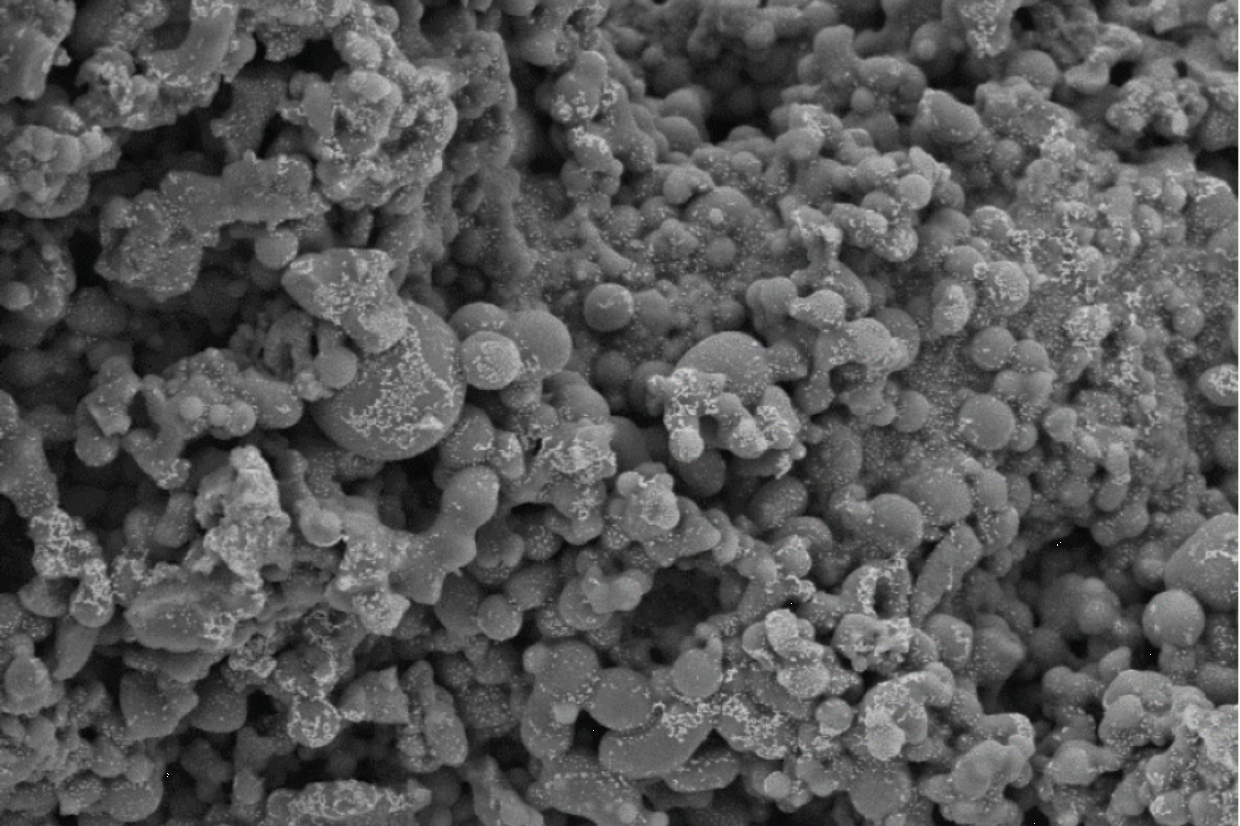Synthesis and characterization of porous carbon nanospheres from biomass derived compounds
DOI:
https://doi.org/10.60136/bas.v11.2022.134Keywords:
Biomass derived compounds, Porous carbon nanosphere, Hydrothermal process, Adsorption propertyAbstract
This research studied a synthesis of porous carbon nanospheres prepared from biomass derived compounds, namely glucose, sucrose, glycerol and cellulose by hydrothermal process combined with high temperature activation. The porous carbon nanospheres have been synthesized successfully in various diameters by hydrothermal method. The particle size of the carbon nanospheres is easily tunable from 188 to 10000 nm by simply varying the biomass derived compounds type and solvent concentrations. Surface functional groups, morphology, porosity, thermal stability and pH of zero charge were characterized to describe adsorption property. The adsorption behaviors of three dyes (methylene blue, congo red and direct scarlet 4BS) onto this biomass derived porous carbon nanospheres were investigated in batch systems. The experimental findings showed that the removal efficiencies of three dyes onto porous carbon nanospheres were maximum at the initial solution pH of 7-9 (amount of adsorbed sorbate (qt) ~ 100 mg/g).
References
YUSUFU, M.I., C.C. ARIAHU, and B.D. IGBABUL. Production and characterization of activated carbon from selected local raw materials. African journal of pure and applied chemistry. 2012, 6(9), 123-131.
SRICHAROENCHAIKAL, V., C. PECHYEN, D. AHLONG , and D. ATONG. Preparation and characterization of activated carbon from the pyrolysis of physic nut (Jatropha curcas L.) waste energy. Fuels. 2007, 22, 31-37.
KRISTIANTO, H., C.D. Putra, A.A. ARIE, M. HALIM, and J.K. LEE. Synthesis and characterization of carbon nanospheres using cooking palm oil as natural precursors onto activated carbon support. Procedia chemistry. 2016, 16, 328-333
CHEN, Y., Y. ZHU, Z. WANG, Y. Li, L. WANG, L. DING, X. GAO, Y. Ma , and Y. GAO. Application studies of activated carbon derived from rice husks produced by chemical-thermal process. A review. Advances in Colloid and Interface Science. 2011, 163, 39-52.
KRISHNAMURTHY, G. and R. NAMITHA, SARIKA AGARWAL. Synthesis of carbon nanotubes and carbon spheres and study of their hydrogen storage property by electrochemical method. Procedia Materials Science. 2014, 5, 1056-1065. ISSN 2211-8128.
MOHAN, D. and C.U. PITTMAN. Activated carbons and low cost adsorbents for remediation of tri- and hexavalent chromium from water. Journal of Hazardous Materials. 2006, 137, 762-811.
อภินันท์ สุทธิธารธวัช, การเตรียมผงคาร์บอนที่มีรูพรุนระดับ 2-50 นาโนเมตรโดยอาศัยกระบวนการอบแห้งแบบพ่นฝอย, งานวิจัยฉบับสมบูรณ์ที่ได้รับทุนสนับสนุนการวิจัยจากสำนักงานกองทุนสนับสนุนการวิจัยปี 2557.
เกรียงศักดิ์ ไกรวัฒนวงศ์ และ ปิยะสาร ประเสริฐธรรม. การเตรียมเมสโซพอร์รัสคาร์บอนซีโรเจลจากรีซอร์ซีนอลและฟอร์มัลดีไฮด์. งานวิจัยฉบับสมบูรณ์ที่ได้รับทุนสนับสนุนการวิจัยจากสำนักงานกองทุนสนับสนุนการวิจัยปี 2552.
เกรียงศักดิ์ ไกรวัฒนวงศ์, สุรีย์ภรณ์ ตันติธัญญกุล, ชนิดา เวสนุสิทธิ์ และ ธัชพล ภักดีอาษา. เมโซพอรัส คาร์บอนเจล: ปัจจุบันและอนาคต, วิศวสาร ลาดกระบัง. 2551, 25(1), 37-41.
ZHU, Y., H. HU, W. LI, and X. ZHANG. Resorcinolformaldehyde based porous carbon as an electrode material for upercapacitors. Carbon. 2007, 45(1), 160-165.
MACIAS, C., G. RASINES, T.E. GARCIA, M.C. ZAFRA, P. LAVELA, J.L. TIRADO, and C.O. ANIA. Synthesis of porous and mechanically compliant carbon aerogels using conductive and structural additives. Gels. 2016, 2(4), 1-16.
CHEN, F., M. XU, L. WANG, and J. LI. Preparation and characterization of organic aerogels from a lignin-resorcinol-formaldehyde copolymer. Bioresources. 2011, 6(2), 1262-1272.
RIVERA-UTRILLA, J., I. BAUTISTA-TOLEDO, M.A. Ferro-Garcia, and C. MORENO-CASTILLA. Activated carbon surface modifications by adsorption of bacteria and their effect on aqueous lead adsorption. J. Chem. Technol. Biotechnol. 2001, 76, 1209-1215.
ZHAO, H., H. ZHONG, Y. JIANG, H. LI, P. TANG, D. LI, and Y. FENG. Porous ZnCl2-activated carbon from shaddock peel: methylene blue adsorption behavior. Materials, 2022, 15(3), 895.
FALCO, C., N. BACCILE, and M.-M. TITIRICI. Morphological and structural differences between glucose, cellulose and lignocellulosic biomass derived hydrothermal carbons. Green Chemistry. 2011, 13(11), 3273-3281.
AUSAVASUKHI, A., S. SOMBATSRI, P. KUMBOONMA, and T. SOOKNOI. Catalytic behavior of Cr-modified zeolites in the conversion of glucose to 5-hydroxymethylfurfural. Burapha Science Journal. 2015, 20(1), 1-14.
SHEN, L., H. YIN, A. WANG, Y. FENG, Y. SHEN, Z. WU and T. Jiang. Liquid phase dehydration of glycerol to acrolein catalyzed by silicotungstic, phosphotungstic, and phosphomolybdic acids. Chemical Engineering Journal, 2011, 180, 277-283.
RUIZ-CABRERA, M.A., C. RIVERA-BAUTISTA, A. GRAJALES-LAGUNES, R. GONZÁLEZ-GARCÍA, and S.J. SCHMIDT. State diagrams for mixtures of low molecular weight carbohydrates. Journal of Food Engineering. 2016, 171(1), 185-193.
GÓMEZ-SIURANA, A., A. MARCILLA, M. BELTRÁN, D. BERENGUER, I. MARTÍNEZ-CASTELLANOS, and S. MENARGUES. TGA/FTIR study of tobacco and glycerol-tobacco mixtures.Thermochimica Acta. 2013, 573(1), 146-157.
LEE, C.Y., M.U. WAHIT, and N. OTHMAN. Thermal and flexural properties of regenerated cellulose(RC)/poly(3-hydroxybutyrate)(PHB) biocomposites. Jurnal Teknologi. 2015, 75(11), 107-112.
KIM, J.R., B. SANTIANO, H. KIM, and E. KAN. Heterogeneous oxidation of methylene blue with surface-modified iron-amended activated carbon. American Journal of Analytical Chemistry. 2013, 4(1), 115-122.
AUSAVASUKHI, A., C. KAMPOOSAEN, and O. KENGNOK Adsorption characteristics of Congo red on carbonized leonardite. Journal of Cleaner Production. 2016, 134(1), 506-514.
SUN, D., Z. ZHANG, M. WANG, and Y. WU Adsorption of reactive dyes on activated carbon developed from Enteromorpha prolifera. American Journal of Analytical Chemistry. 2013, 4(1), 17-26.
KOUOTOU, D., H.N. MANGA, A. BACAOUI, A. YAACOUBI, and J.K. MBADCAM. Optimization of activated carbons prepared by H3PO4 and steam activation of oil palm shells. Journal of Chemistry. 2013, 2013(1), 1-10.

Downloads
Published
How to Cite
Issue
Section
License
Copyright (c) 2022 Bulletin of Applied Sciences

This work is licensed under a Creative Commons Attribution-NonCommercial-NoDerivatives 4.0 International License.









